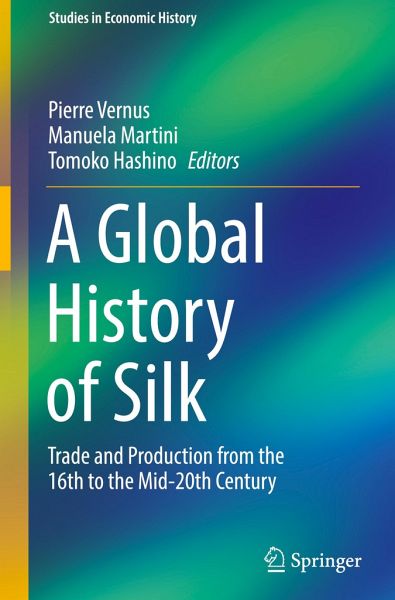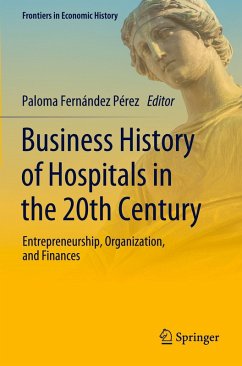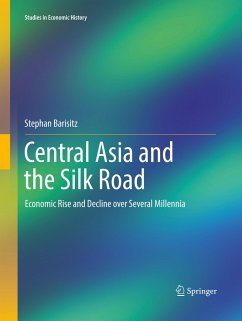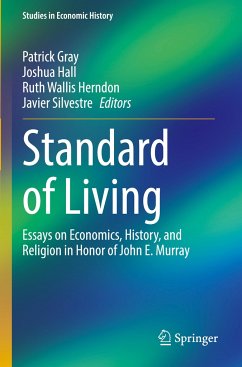
A Global History of Silk
Trade and Production from the 16th to the Mid-20th Century
Herausgegeben: Vernus, Pierre; Martini, Manuela; Hashino, Tomoko

PAYBACK Punkte
61 °P sammeln!
This book explores the global development of the production and trade of silk and related industries from a historical perspective. From the sixteenth to the twentieth century, it takes long-term movements and global dynamics into account. Covering a wide geographical area, including East-Asia, Northern and Southern Europe, and North-America, the respective contributions examine economic activities related to silk production, silk processing, trading and consumption of silk and silk fabrics, while also highlighting diverse paths of industrialization and economic development.The book is divided...
This book explores the global development of the production and trade of silk and related industries from a historical perspective. From the sixteenth to the twentieth century, it takes long-term movements and global dynamics into account. Covering a wide geographical area, including East-Asia, Northern and Southern Europe, and North-America, the respective contributions examine economic activities related to silk production, silk processing, trading and consumption of silk and silk fabrics, while also highlighting diverse paths of industrialization and economic development.
The book is divided into three parts, the first of which features contributions on silk markets and trade, covering topics such as auction sales and Sino-European trade. The second part addresses issues of work organization, institutional developments and the gendered division of labour, discussing topics such as systems of home-based and factory production and the organization of quality control. In turn, the third part highlights technological innovations and knowledge transfer. This book appeals to scholars and students of economic history who are interested in a better understanding of the key features and patterns in the development of the silk industry and trade and, more widely, in the global economic history of the early modern and modern periods.
The book is divided into three parts, the first of which features contributions on silk markets and trade, covering topics such as auction sales and Sino-European trade. The second part addresses issues of work organization, institutional developments and the gendered division of labour, discussing topics such as systems of home-based and factory production and the organization of quality control. In turn, the third part highlights technological innovations and knowledge transfer. This book appeals to scholars and students of economic history who are interested in a better understanding of the key features and patterns in the development of the silk industry and trade and, more widely, in the global economic history of the early modern and modern periods.














